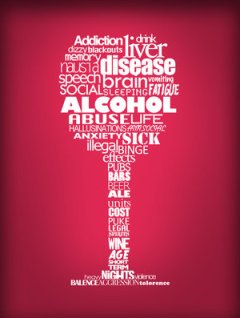By Frances Patterson, PhD, MAC
 I often am asked questions regarding the ethical issues for counselors regarding social networking, specifically Facebook. At that point I usually hear about a situation that has caused professional and personal problems for an addictions professional. In each scenario that follows names have been changed and situations modified to protect the identity of those involved.
I often am asked questions regarding the ethical issues for counselors regarding social networking, specifically Facebook. At that point I usually hear about a situation that has caused professional and personal problems for an addictions professional. In each scenario that follows names have been changed and situations modified to protect the identity of those involved.
Situation 1 – Using Social Media to Monitor Clients
Danny is a substance abuse counselor who decided to join Facebook for a specific reason: he wanted to look up clients to see if they were posting information on Facebook that would indicate they were using.
What are the Ethical Concerns?
Client autonomy: Clients in treatment have a right to choose whether to use alcohol or other drugs. As a counselor would you drive by a client’s house to see if that client is sitting on the front porch smoking a joint? Clients have a right to their personal lives outside of treatment, whether or not it is what we would choose for them.
Counseling relationship: Trust is a major component of the counseling relationship. A client could consider it a violation of that trust to “spy” on him on Facebook. Before the advent of Facebook, a counselor asked clients if they were using and conducted drug screens. Should our methods be any different today?
Do no harm: Is there the possibility that such actions could harm a client? We must always consider the possible outcomes of our actions when it involves client care. A client could possibly feel betrayed by her counselor if such “investigation” is pursued by the counselor.
Professional boundaries: One of our responsibilities as counselors is to have healthy professional boundaries. These boundaries can easily become blurred if or when we begin to intrude on the personal lives of clients outside the professional relationship. Just as we need to set appropriate boundaries with clients regarding our personal Facebook pages, we too should respect their boundaries.
Situation 2 – The Personal/Private Divide
Mary Beth was a counselor at a large addictions treatment facility. She is not in recovery from drug or alcohol addiction. She had recently returned from a vacation at the beach. A client of one of Mary Beth’s colleagues at the same facility mentioned during an individual session that he had been searching people on Facebook and found Mary Beth’s page. He stated, “I really liked those pictures of her vacation.” After the client left, his counselor looked up Mary Beth on Facebook to see what the client was referring to. To her dismay she found that Mary Beth had no security on her page and all of her information was open to anyone who came across it. Additionally, she had posted pictures of herself in a bikini, holding a beer in her hand, with a male companion who appeared to be fondling her. Mary Beth was fired from her job. The agency maintained that she was not projecting a professional image and was negatively affecting the reputation of the agency.
What are the Ethical Concerns?
Counseling relationship: What did the pictures portray to clients and colleagues who saw them on her Facebook page? We have a responsibility to safeguard the integrity of our relationship with clients. (NAADAC Code of Ethics, Principle I) Part of this safeguard is to always being aware of perceptions and how those perceptions may change the professional relationship with a client.
Professional responsibility: If Mary Beth had put the security blocks on her page which would allow only invited friends to see her page, she would have been acting more responsibly. The addiction professional recognizes that those who assume the role of assisting others to live a more responsible life take on the ethical accountability of living responsibly. The addiction professional recognizes that even in a life well-lived, harm might be done to others by works and actions. (NAADAC Code of Ethics, Principle IV)
Discretion: Mary Beth’s actions in regards to Facebook appear to be poor professional judgment. She certainly has a right to her personal life and to enjoy herself. On the other hand, professional judgment includes how we conduct ourselves in public, even in our leisure time which includes what we post on a Facebook page for all to view.
Do no harm: Although Mary Beth is not in recovery herself, the posting of the picture of her drinking may cause undue influence on clients to assume that if it is OK for a counselor to participate in these activities that it must be acceptable for them also. Or clients may believe that Mary Beth is not “practicing what she preaches”. Again, often we are talking about perceptions which may not always be reality.
Situation 3 – Information Sharing
Carla is in private practice working as a substance abuse professional. She recently joined Facebook and being a very social person, enjoys the interactions each evening with her Facebook friends. One of those friends is a counselor at a local substance abuse in-patient facility. For the past few evenings Carla has noticed that her friend has begun to post information about clients she has seen that day, funny things they have done or unusual crises they have experienced. Although her friend is not stating client names she has told others where she works.
What are the Ethical Concerns?
Confidentiality: We are to make every effort to protect the confidentiality of client information. (NAADAC Code of Ethics, Principle III) Carla’s friend has stated where she works and now she is talking about clients of that facility. She is not honoring confidentiality, even though she is not stating client identifying information. She may inadvertently be giving enough information that someone could deduce to whom she is referring. This is also a violation of client rights and their expectation that their information will be protected.
Due diligence: We are to be conscientious and careful in all of our actions when it concerns clients and our professional life. We, as professional counselors, should make every effort to avoid “gossiping” about clients. It is possible that, unbeknownst to this counselor, a client may be a “friend of a friend” on Facebook and actually can see what this counselor is posting and recognizes that the counselor is telling her story.
Legal concern: Carla is bound under 42 CFR Part 2 and HIPAA to make every reasonable effort to protect client information. This type of behavior could result in litigation.
Resolving Ethical Issues: Carla has a responsibility to go to her friend and discuss the ethical and legal concerns she has regarding her friend’s behavior. If her friend is unwilling to change that behavior, Carla next needs to seek supervision and consider her licensure reporting responsibility. (NAADAC Code of Ethics, principle VIII)
Situation 4 – Venting Frustrations
Martin has been having a difficult time at work lately. It is increasingly more stressful with an increased number of clients who are exhibiting more severe symptoms, fewer staff and fewer resources. He has recently been having disagreements with his supervisor. He has also begun to post his “venting” on his Facebook page.
What are the Ethical Concerns?
Discretion: As professionals we have an obligation to use utmost discretion in all of our professional life. Ethically, Martin would be well served to seek other supervision or peer support in his stressful situation rather than venting on his Facebook page.
Professional relationships: Martin is not building, supporting or treating his professional relationships respectfully. As professionals we are to respect other professionals by going to them when we have problems that are affecting us. I have heard many accounts of people losing their jobs as a result of airing their complaints about their jobs and employers on Facebook.
Situation 5 – Compromised Testimonials?
A 12 step focused residential treatment facility developed a Facebook page as a means of advertising. It is also a means for keeping a connection with former clients. These former clients may also write comments on their experience with the treatment program. Recently the administrator contacted former clients requesting that they post testimonials on Facebook. A counselor conducting patient aftercare was made aware of the request and was concerned about confidentiality.
What are the Ethical Concerns?
Informed consent and Confidentiality: In this situation clients need to be fully informed about the risks of posting testimonials on Facebook. If they do post voluntarily, they should be informed of the risk of confidentiality being compromised.
Due Diligence: This treatment facility, as well as the counselor who was made aware of the request, have an obligation to be diligent in the care of clients and sensitive client information.
Exploitation: Is the facility using client testimonials to help others who are suffering with addictions or are they using this to further their business and bring in revenue? The concern here is whether or not it is exploiting clients to ask them to help in marketing a program by posting personal testimonials about their treatment experience. Clients may not understand the far-reaching outcomes of this course of action. Treatment programs need to consider all aspects of their decisions to use media such as Facebook to market their programs.
Reporting
Often I hear professionals say that they hesitate to report unethical behavioral because they are friends with the person or they don’t want to hurt the other person’s career. As licensed or certified professionals, we have an ethical and legal obligation to report unethical behavior that cannot be resolved or that is such an egregious violation that it is beyond being resolved.
As technology grows and becomes more and more available, we as professionals must always consider the ramifications of our actions when using any technology, including social network sites such as Facebook. When ethics are violated, we have an obligation to address the issue and report to licensure boards when necessary.
Be true to yourself, your profession and your colleagues.
Source: http://www.naadac.org/component/content/article/48-publications/643-careless-use-of-facebook-can-jeopardize-your-career
Like this:
Like Loading...
 Many people use alcohol to relax and unwind. People with alcohol-related disorders can often and easily drink to excess causing major problems in their lives.
Many people use alcohol to relax and unwind. People with alcohol-related disorders can often and easily drink to excess causing major problems in their lives.











